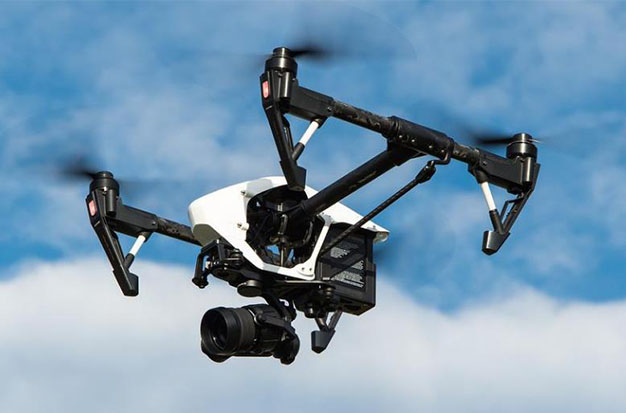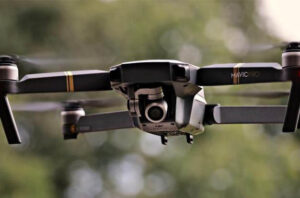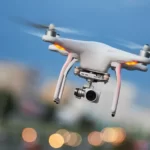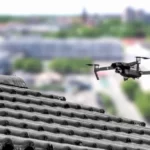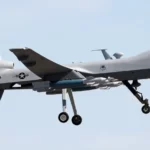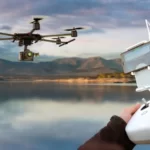One of the most often asked queries. The question of “How far can the drone fly?” arises even if someone observes another person riding a drone. Many individuals are so perplexed that they seek the owner’s explanation. The reality is that drone range is situation-dependent.
A high-end consumer drone can have a range of around 2.5 to 4.5 miles, compared to a toy drone’s possible range of 20 to 100 yards (4 – 8km). A typical range for mid-range consumer drones is between 0.25 and 1.5 miles (400m – 3km).
The intensity of the controller signal and the choice of transmission technologies affect the precise range of your drone. It should come as no surprise that more costly drones would often have a longer range. However, for the majority of recreational usage, you won’t be able to reach the controller signal’s maximum range without first flying well beyond your line of sight, which is strictly prohibited by FAA guidelines. Nevertheless, there are also more compelling arguments in favor of choosing a louder controller signal.
Table of Contents
The Controller Range
The drone is a phrase that does not apply to all situations. They are available in a broad variety of sizes, shapes, and distances from the controller so that they can maintain communication. With a toy drone, you can’t expect to travel very far at all—certainly not farther than a football field, and maybe even less.
A mid-level consumer drone will provide you with significantly more range with a slight price increase and improvement in controller signal strength. Depending on the price of the drone, you may be able to fly it up to a mile and a half away from you before the signal starts to fade. Drones typically cost between $150 and $500.
High-end drones with prices and quality starting to approach those of prosumers can give you some serious long-range capabilities. A drone that can maintain a signal with its controller for 2.5 to almost 5 kilometers costs between $800 and $1,500. That is likely much beyond the range at which you can often maintain a clear vision of the drone.
Factors Affecting Flight Range of Drones
Well, there are a lot of variables, such as size, use, battery, and others. For instance, a huge drone will unquestionably deplete its battery far more quickly than a small one. You must defy gravity in order to stay in the air. The force of the propellers will work harder to overcome gravity as the drone gets heavier, which will cause the battery to discharge more quickly.
The size and kind of the battery are also significant elements in deciding how far the drone can fly from its operator; the size of the drone is not the only one. The most common drone battery has a 10-minute flying time; as a controller, you must keep in mind that you can fly the drone as far as feasible with this battery life. You just have a few minutes left to explore it before you lose it halfway; you only have five minutes since you require five parts. Therefore, even though you can use your drone to the fullest extent, losing it is not cool. While it is feasible to locate a missing drone, it is undoubtedly unpleasant.
Currently, the simplest versions of drones only have a maximum range of 20 meters, while some long-range drones can fly many miles. In general, the more expensive a drone is, the better its range.
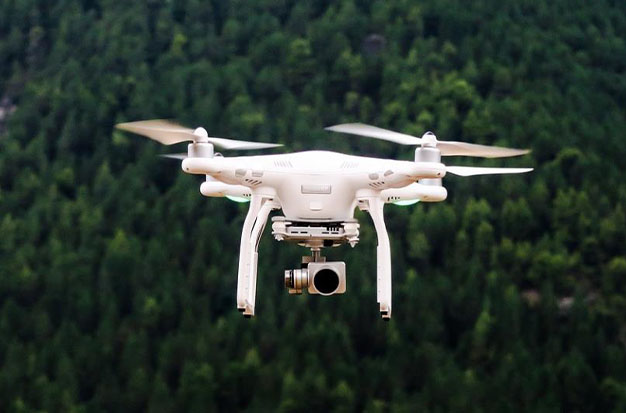
Uses for Long Range Drones
Long-range drones with a range of three to four miles between the controller and the operator have a wide range of applications. Licensed drone pilots can get a waiver from the FAA to operate BVLOS due to the commercial demand for drones that can fly farther than the pilot can see them in person (beyond visual line of sight).
Agriculture
A drone’s ability to traverse an entire field while remaining within three to four miles of the controller is essential for farmers scouting a field. It is simple to have the drone cover the entire area without the operator having to maintain the drone in sight thanks to pre-planned flight path settings. Long battery flight times also guarantee that the drone can traverse the entire field in a single pass before landing back at the starting point at the end of the course.
Mapping
Similar to this, when used for mapping, drones must cover a large area, and they can do this most efficiently when they can fly far outside the operator’s visual field. Long-range drones can cover a huge region and collect data to create incredibly realistic, even 3D models.
Safety & Security
A drone that can cover the whole perimeter of a major construction site, a prison, or a commercial warehouse will probably need to leave the operator’s line of sight. The same is true for public safety organizations following suspects or conducting search and rescue operations; they require a drone with a long range.
Package Delivery
In order for drone delivery to be a relatively feasible business in this emerging market, drones need to have a range of several kilometers. It must be able to travel a few kilometers to the delivery area, whether it is launched from a warehouse or a delivery truck. Automated flight planning will essentially do away with the requirement for a drone operator to keep an eye on it.
Recreational Benefits of a Long-Range Drone
Even if you don’t intend to use a drone to map out kilometers of land, having a drone with a longer range is still useful. Remember that a drone with a stronger signal transmission will probably be able to maintain that signal even at a closer distance. Other elements that may otherwise obstruct the controller connection or the video transfer signal can be made up for with a stronger signal and a more potent transmission. As a result, even if you might not use a long-range drone for long-distance missions as a hobbyist, it might be the solution to visual stuttering or latency problems closer to home.
What happens when the drone gets out of range?
Several things can happen when your drone leaves the controller’s line of sight, some of which are described below.
- The drone will instantly return home if it is within FPV range. In the best-case scenario, most GPS drones include this as a built-in backup.
- Finally, the drone will halt and hang in midair. This will enable you to approach the drone and re-capture the pilot’s signal.
- Anywhere it is, the drone will quickly land. It is not a problem unless you are flying over water or in terrain that is challenging to access.
- Unless you turn off the drone’s failsafe settings, the drone will keep flying away (a flyaway drone situation).
- There will be a drone crash. This could happen if the back-to-home feature is activated and there are obstacles in the way, but it can also happen due to a flyaway.
- The best course of action is to be proactive before using the drone.
How to Extend a Drones Battery Life and Fly Further Distances
Your battery is a key factor in getting the most out of your drone. It should go without saying that a drone’s battery is an essential piece of gear. Your flying distances might be significantly increased or decreased depending on how you use it.
These days, a drone’s flying time should last between 20 and 25 minutes, but it all relies on how well you take care of your drone’s battery.
Here is a list of actions you can take to help your drone’s battery last longer, allowing you to fly farther and for longer:
- Make the proper battery charges. utilize the proper charger
- Before charging, let your battery warm up to room temperature.
- Don’t add equipment to your drone (if possible). They might increase the battery’s burden.
- Invest in a new battery. Find batteries that work with your drone. Verify that the mAh is the same or more.
- Start flying and move toward your destination. Make a shot plan.
- Keep an eye on your drone flying. Fly it as necessary for your activities.
- Keep your batteries in a safe place.
Conclusion
Different jurisdictions have different drone usage policies. The ideal method to choose a long-range drone is to take into account all of the crucial characteristics. Try to ascertain the drone’s behavior from various perspectives and gauge its performance before making a purchase.
Read More: How to Connect Drone to Controller?
